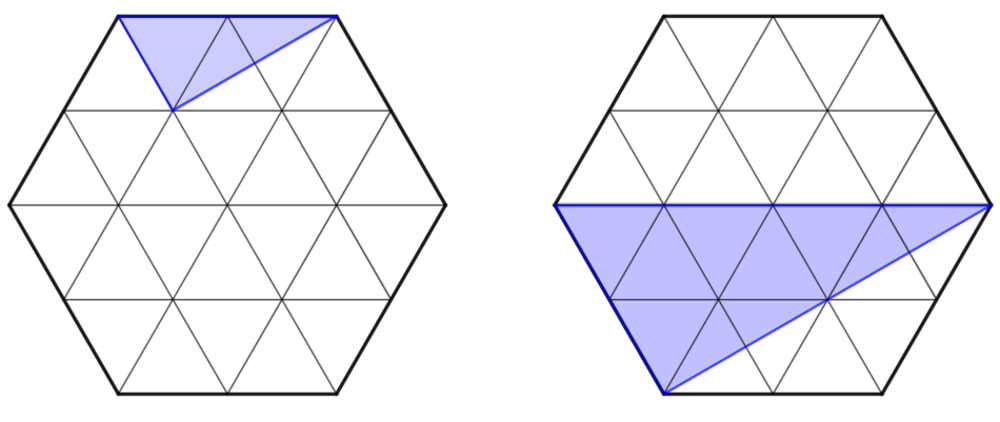Hexa-Integer
 Both diagrams show that for hypotenuse lengths
and
the right triangle can be constructed by taking two vertex points on the edges of the hexagon. But must that be the only case for regular hexagon of
unit equilateral triangles?
Both diagrams show that for hypotenuse lengths
and
the right triangle can be constructed by taking two vertex points on the edges of the hexagon. But must that be the only case for regular hexagon of
unit equilateral triangles?
The regular hexagon of side length consists of unit equilateral triangles. As shown above, we can select two distinct points on its perimeter (not necessarily the vertex points of two unit equilateral triangle), such that:
- The distance between these points is an integer.
- It is the hypotenuse of the right triangle.
- In addition, the triangle passes through one vertex point, which forms the right angle.
Does there exist a right triangle whose hypotenuse length is ?
Inspiration. (See solutions.)
This section requires Javascript.
You are seeing this because something didn't load right. We suggest you, (a) try
refreshing the page, (b) enabling javascript if it is disabled on your browser and,
finally, (c)
loading the
non-javascript version of this page
. We're sorry about the hassle.
Since 2 < 3 < 2 3 , by Intermediate Value Theorem , there exists a moment when Q R = 3 . The answer is Y e s .